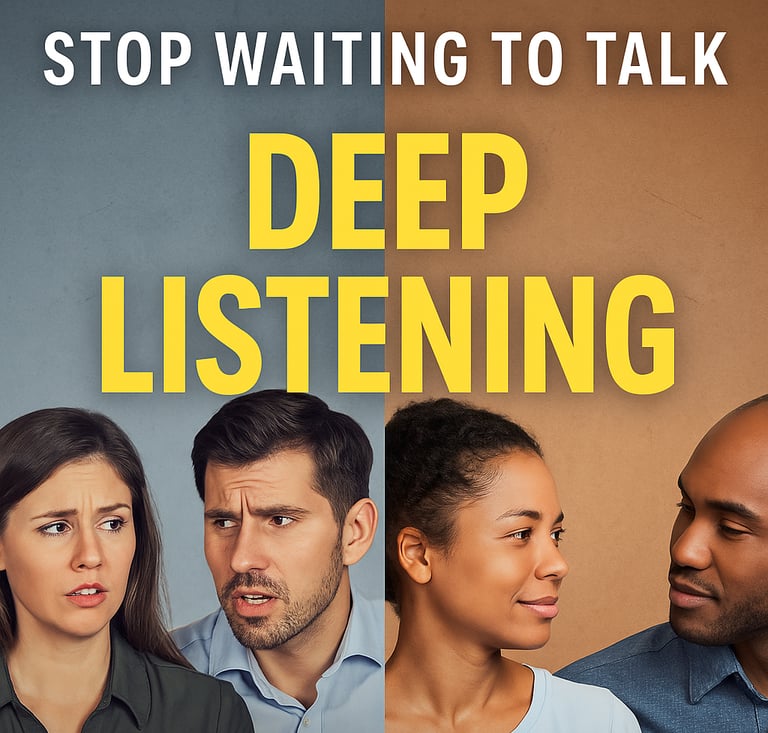Stop Waiting to Talk: The Power of Deep Listening
Blog post dDeep listening isn’t passive — it’s an active choice. Shift from “waiting to talk” to “ready to understand,” and you’ll build trust, empathy, and connections that stick.escription.
PRO TALK
Liz Stubbs
8/9/20251 min read


Most of us think we’re good listeners… until we replay a conversation in our heads and realize we were mentally drafting our reply while the other person was still talking.
Here’s the thing: when you’re in “response mode,” you’re not in “connection mode.” And people can feel it.
Deep listening is more than just hearing words — it’s catching the meaning, the emotion, and the unspoken ask underneath. That’s where real connection lives.
Tip 1: Listen Like You’ll Have to Repeat It Back
Pretend your only job in the conversation is to explain it to someone else afterward. It forces your brain to stay present instead of sprinting ahead to your talking points.
Why it works: Your attention is anchored to them, and they feel it. People open up more when they sense they’re truly heard.
Tip 2: Embrace the Thoughtful Pause
We’re so quick to fill silence, but those extra beats after someone finishes speaking? That’s gold. It shows you’re actually processing what they said.
Instead of jumping in instantly, try a micro-pause and then respond with:
“That’s a great point — here’s what I’m hearing…”
Why it works: It slows the tempo, adds weight to your words, and gives the conversation breathing room for insight to surface.
Bottom line: Deep listening isn’t passive — it’s an active choice. Shift from “waiting to talk” to “ready to understand,” and you’ll build trust, empathy, and connections that stick.
Come Home to Your North
SOUL NORTH Wayfinding
liz@soulnorthwayfinding.com
© 2025. All rights reserved.
